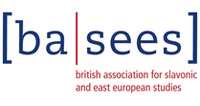

|
Mon1 Jan00:30am(15 mins)
|
Where:
Presenter:
|
From the fragments of the Russian Empire emerged fledgling nations, newly minted Soviet Republics, each striving to find its place in a new ideological landscape. Discourse around nationhood, national identity, and what it meant to be “Soviet” are all themes which consumed larger Party politics of the time and have been explored in the recent historiography. While Lenin and Stalin famously had differing opinions on the role and dominance to which the Russian language and nationality should play in contrast to the titular nationality of each republic, I would argue that the Second World War created the kind of crisis necessary to create, solidify and unify the national hierarchies of Soviet Union internally as well as externally. How this new nationality was developed and experienced internally, specifically in the South Caucasus during the war, is something I plan to explore.
Since the opening of the archives in this region following the collapse of the USSR, there has been much research done to analyse what being “Soviet” meant, as well as studies on Soviet national identity creation, crises, and conflicts within the various republics, not to mention the vast amount of literature examining the Soviet experience of the Second World War. However, research specifically on the South Caucasus during the war remains particularly lacking, especially within the scope of nationalities in the Red Army and the transitions that occurred as soldiers shifted identities from an imperial colony to a republic. I hope to bridge the gap in the literature that exists around how national identity creation was experienced in this region during the war through military service. Utilising the framework provided by recent scholarship on Central Asia’s contributions to the war, I intend to identify what soldiers’ conceptions of nationhood were and what being part of a multi-ethnic state looked like during this period. I hope to understand soldier motivation, and the role of soldiering in the making of national identity.
By analysing documents found online and in the Armenian and Georgian archives, I am drawing from a mixture of ego documents, Red Army officer reports, newspaper articles and broadcast speeches to better understand these themes and Soviet Transcaucasia’s national developments. In order to understand the perception and creation of the Soviet national identity in the Red Army in the South Caucasus during the war, and what this demonstrates about these republics’ relationship to the Soviet Union, I will be examining the activities of the 89th Infantry Rifle Division (Tamanyan Division) which marched on Berlin, the real or perceived threats of independent anti-Soviet groups such as the Dashnaks, as well as the careers of senior officers who were able to rise to high status positions while not being part of the “primary” nationality.